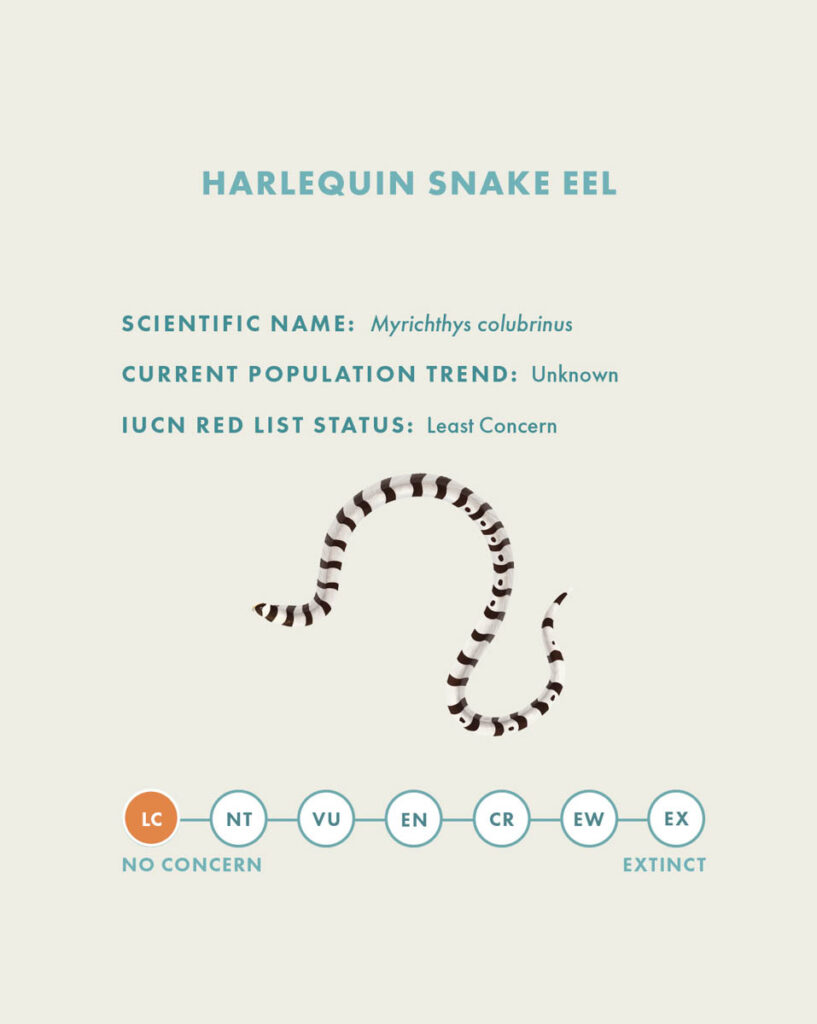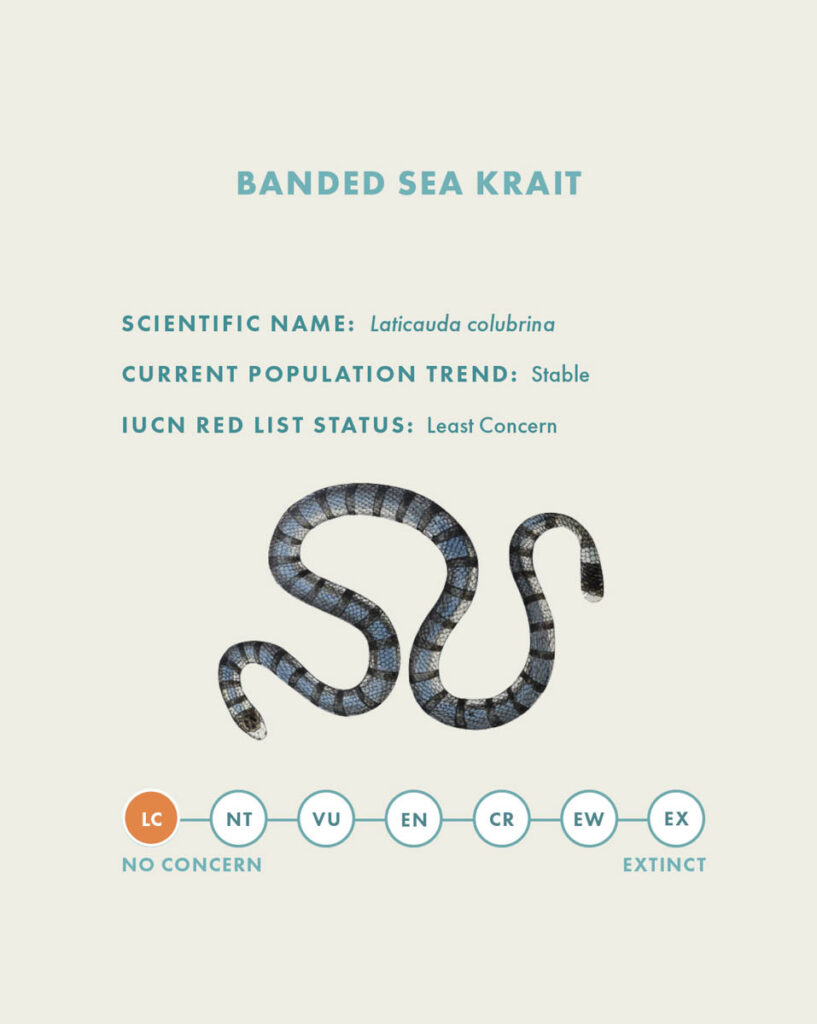A harmless snake eel known as Harlequin Snake Eel or Ringed Snake-Eel (Myrichthys colubrinus, Boddaert, 1781) was spotted at the BCSS dive site “Kingfish Alley” – a 14-18m deep reef outcrop situated off 2-mile reef in the central part of the Bazaruto Archipelago National Park. This species is known to occur in East African coastal waters, occupying depths from 0 to 30 metres and could be found over sand or rubble bottom and in seagrass beds. They are active during the day and feed mainly on small fish and crustaceans. Mozambican waters represent southern extent of the species distribution, where it is however not abundant, which makes this record important.

Harlequin Snake Eel belongs to the Genus Myrichthys, subfamily Ophichthinae, tribe Ophichthini.
Large specimens attain 97 cm in total length.
Due to extremely similar morphology, Harlequin Snake Eel can easily be confused with a Sea Krait (Laticauda colubrina) – a venomous reptile, also known as a banded sea krait, which the snake eel mimics remarkably. Even the species names resemble each other – colubrinus and colubrina, one being a fish and another a reptile.
At a closer look, however, it is possible to tell the two species apart.
The Harlequin Snake Eel features a cream-colored body partially or completely encircled with approximately 25 to 35 dark brown bands that extend onto its dorsal fin. What’s particularly distinctive about this species, as observed in the video, is the formation of a V or heart-shaped pattern by extended on the dorsal fin bands. This unique marking sets it apart from sea kraits, which has up to 65 bands on their grey-blue bodies. Some larger specimens of the snake eel have large dusky spots between bands, especially on trunk and tail. The eel’s pointed snout distinguishes it from a snake’s head in terms of shape. Unlike snakes, the eel lacks visible eyes and nostrils. Instead, it features a distinctive whitish fleshy tip, resembling nostril tubes, which overhangs the lower jaw—a characteristic feature of sea eels. The species is also missing flattened paddle-like tail of a krait, which is another identification key.
Apart from almost identical appearance, these two species are characterized by a very similar habitat type, which is shallow coral reef waters, however, their ranges are overlapping only partially, and there are no records of Laticauda colubrina in WIO, while Myrichthys colubrinus are common in these waters.
Because sea kraits are highly venomous, the similar appearance of the Harlequin Snake Eel serves as a preventive, mimetic adaptation. In that case the eel employs so-called Batesian mimicry as a part of the fascinating world of survival strategies. This biological phenomenon involves the mimicry of highly venomous and dangerous organisms to deter potential predators, employing visual cues such as coloration and morphology as warning conveyed to would-be predators to associate these signals with danger, leading them to avoid these organisms as prey.
Interestingly the Laticauda is feeding almost exclusively on eels, and once they swallow an eel whole, krait is returning to the land for digestion.
Despite not being considered endangered and ranked as Least Concern on the IUCN Red List, Harlequin Snake Eel’soccasionally makes its way into the aquarium trade. Its unknown population trend is worrying, and any sightings contribute towards better understanding of the species population.
While not a common sight, this charismatic fish can occasionally be spotted during our diving expeditions in the mesmerizing and pristine Bazaruto Archipelago, alongside other rare and captivating wildlife.
We value awareness building and communication around marine science and therefore are keen to share our knowledge and years of experience widely, making our facilities and unparallel marine biodiversity, that we’re surrounded by, accessible for and known by those who’d like to support wildlife while exploring it.







